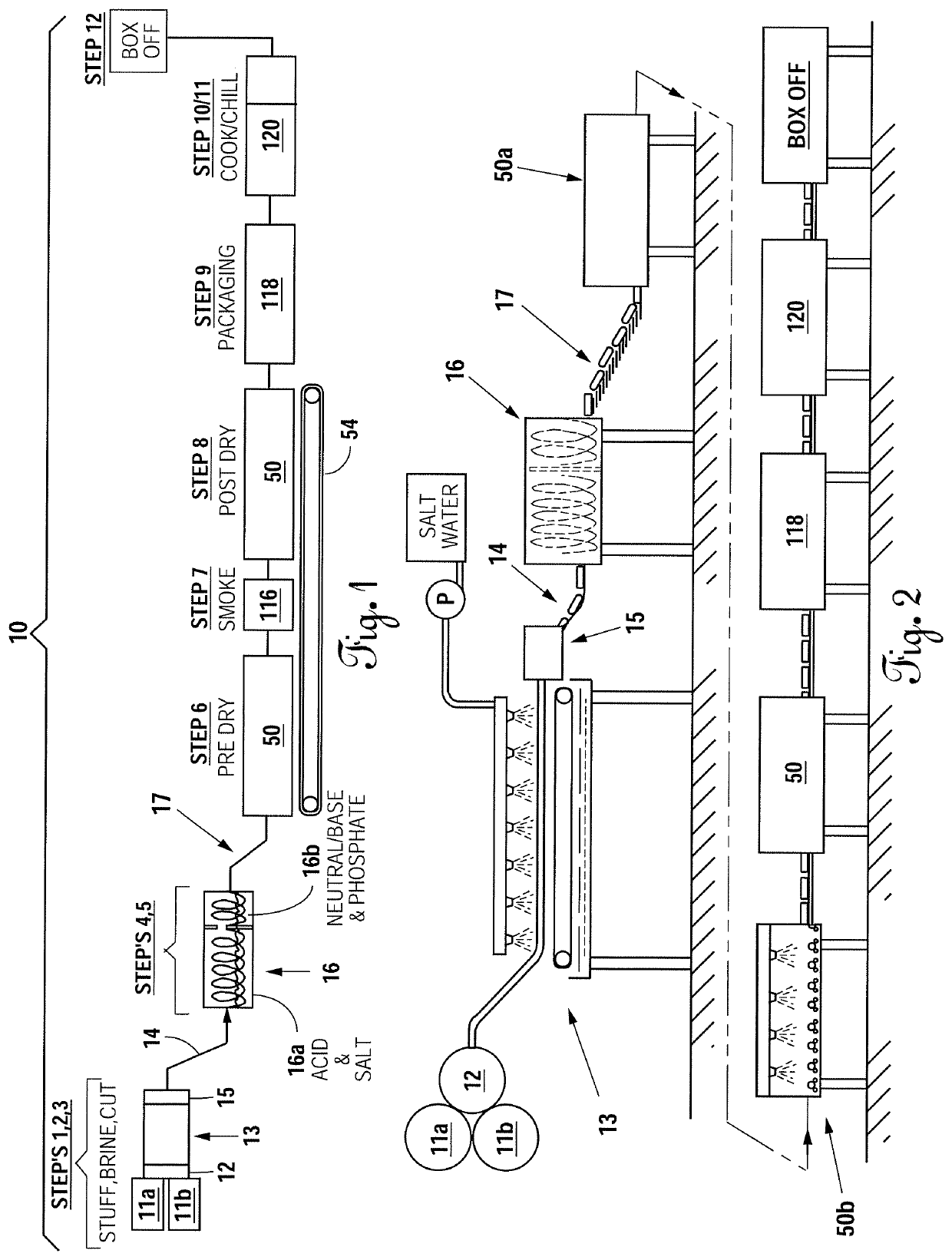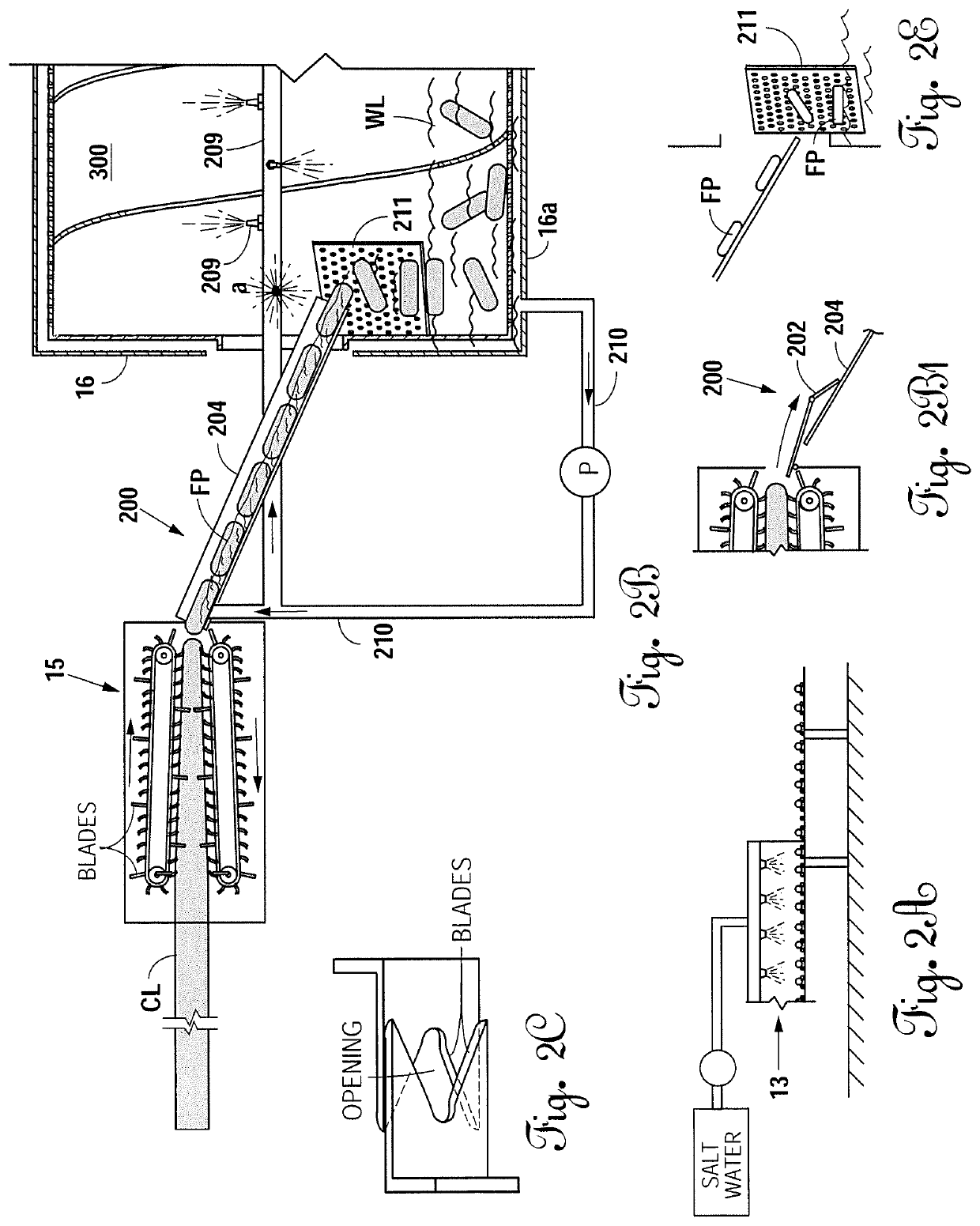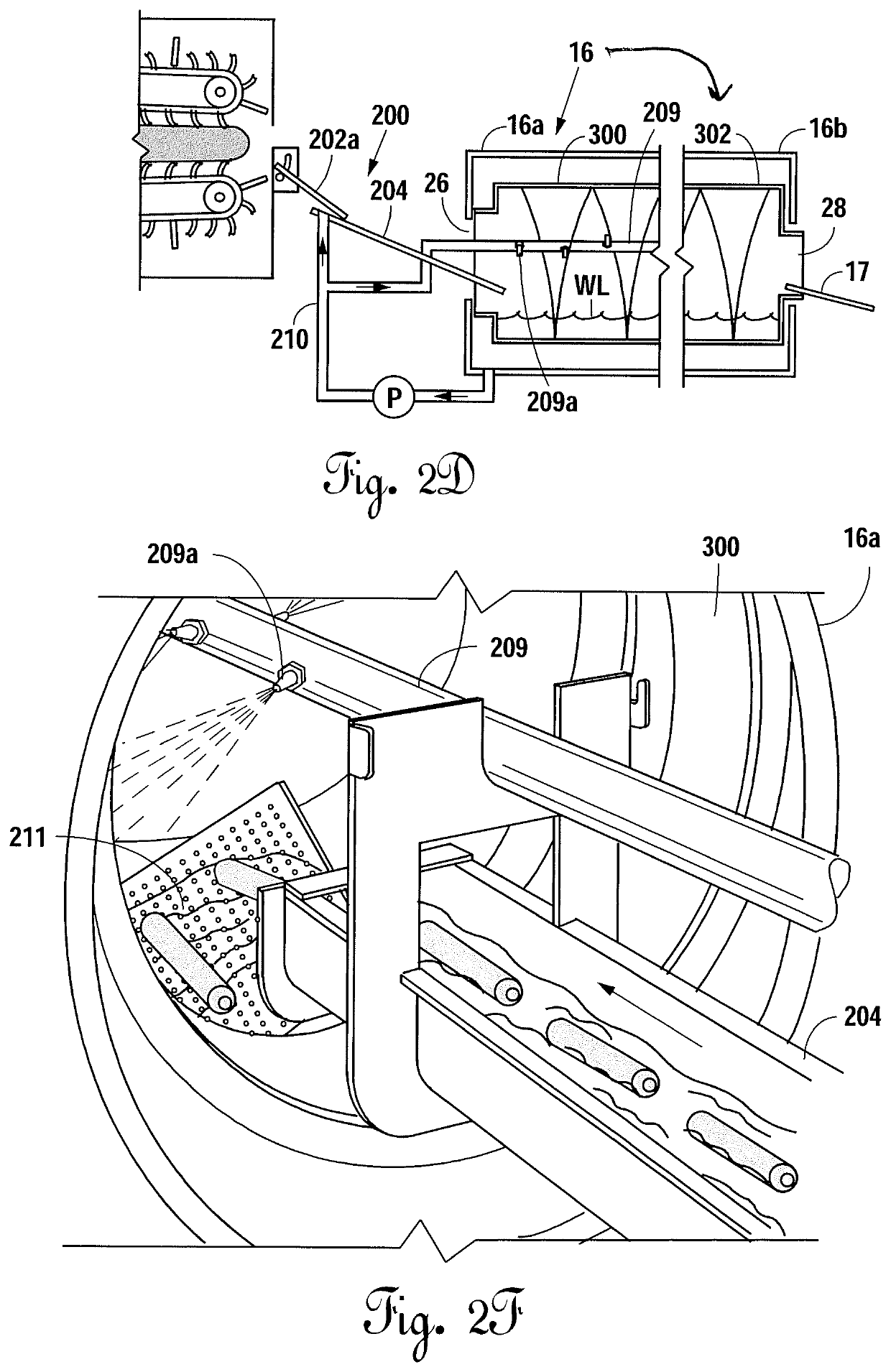Low profile water bath co-extrusion process for sausage manufacturing, and machines for use therewith
a low-profile water bath and co-extrusion technology, which is applied in the directions of application, transportation and packaging, food shaping, etc., to achieve the effect of maintaining the roundness of the product, and evenly drying the produ
- Summary
- Abstract
- Description
- Claims
- Application Information
AI Technical Summary
Benefits of technology
Problems solved by technology
Method used
Image
Examples
Embodiment Construction
[0035]Turning to FIG. 1, an embodiment of Applicant's water bath co-extrusion sausage manufacturing process 10 with various steps and devices for manufacturing sausage or other similar food products, including collagen coated food products, is disclosed. The process begins with a semi-solid meat emulsion, for example, a mix of 0-50% beef, 0-75% pork, and / or poultry, and 0-70% other ingredients including flavoring and a cross linker (optional). The process includes pre-smoke and post-smoke steps, “wet” working and treating individual sausage links, “wet” cooking packaged links and pre and post smoking steps featuring forced hot air drying.
[0036]Extrusion, brine and cutting are Steps Nos. 1, 2, and 3. Following these three steps to set or bond the following with some of their functions described: Step No. 4 (wet)—heat and coagulate casing; Step No. 5 (wet)—rinse and open collagen fibers; Step No. 6 (dry)—pre-dry prepare links for smoke; Step No. 7—liquid smoke; Step No. 8—post-dry pre...
PUM
 Login to View More
Login to View More Abstract
Description
Claims
Application Information
 Login to View More
Login to View More - R&D
- Intellectual Property
- Life Sciences
- Materials
- Tech Scout
- Unparalleled Data Quality
- Higher Quality Content
- 60% Fewer Hallucinations
Browse by: Latest US Patents, China's latest patents, Technical Efficacy Thesaurus, Application Domain, Technology Topic, Popular Technical Reports.
© 2025 PatSnap. All rights reserved.Legal|Privacy policy|Modern Slavery Act Transparency Statement|Sitemap|About US| Contact US: help@patsnap.com



